What’s Really Changing in LED Signage?


LED signage has moved from “new technology” to everyday expectation. Dealers and buyers ask all the time which trends really matter, and here’s what we’re seeing: sharper indoor walls, smarter outdoor efficiency, and digital strategies that deliver measurable outcomes. Whether you manage a school, run a retail chain, or work with municipal projects, these shifts are shaping how screens get specified and installed. What’s driving the growth in LED signage? The biggest driver is performance. Out-of-home advertising keeps climbing past record highs, and digital formats lead that growth. Favorability and “took action” rates outpace many traditional channels, which is why brands continue shifting dollars into DOOH. For buyers, it’s no longer about whether digital is worth it—it’s about which solutions deliver ROI. What this means for you: when clients or committees question the cost, show them measurable outcomes: higher recall, faster response, and trackable results. Are dvLED walls really replacing tiled LCD indoors? They are, and faster than many expected. Buyers want seamless displays without distracting bezels, crisp resolution at closer viewing distances, and longer life cycles with easier maintenance. We’re seeing dvLED replace LCD in lobbies, studios, gyms, control rooms, and universities. Pixel pitch is trending below 1.5 mm, and flagship installs are moving under 1.0 mm with microLED. What this means for you: match pitch to real viewing distance. Overspecifying inflates budgets, while underspecifying disappoints audiences who stand too close. Are outdoor LED signs just brighter, or actually smarter? Brightness still matters, but efficiency is the bigger story. Adaptive dimming, tuned power supplies, and new driver ICs are cutting watts per square meter while keeping daylight visibility. Cities, schools, and businesses are also asking about EMC compliance, weatherproof ratings, and diagnostics—because uptime and reliability determine real ROI. What this means for you: always ask vendors for typical power draw, not just maximum. Request dimming curves by time of day and remote diagnostic options to protect your investment. How does programmatic DOOH change opportunities for buyers? Programmatic used to be limited to big-city billboards. Now, venues, QSRs, schools, and municipalities use it to sell space and reach audiences in real time. Advertisers want moments that matter—lunchtime at a drive-thru, pregame at a stadium, pickup time at a school. Proof of play and campaign lift are non-negotiable now. What this means for you: if your network can support daypart scheduling and fast creative swaps, you unlock new revenue streams. Cloud control with cellular keeps updates simple, even for small IT teams. Does digital signage really change customer behavior? Yes—and the numbers prove it. Retailers report significant sales lift when messages run at the point of decision. Queue screens reduce perceived wait times by more than 30%, cutting frustration and improving satisfaction. When content entertains or informs, audiences stay engaged—and engaged audiences act. What this means for you: map content to the exact moments your audience makes decisions. Commute windows, lunch rush, dismissal times, and event days all deserve unique messaging. What indoor applications are expanding fastest? Corporate & civic hubs: lobby welcome walls, town-hall stages, and emergency messaging. Education: digital marquees, gym scoreboards, and video walls for ceremonies. Healthcare & hospitality: wayfinding displays, patient communication, and lobby storytelling. Spec tip: look for service-friendly cabinets—front access and modular design reduce downtime and service costs. What outdoor applications are getting funded right now? Retail & QSR: roadside displays, drive-thru boards, and promotions that shift by inventory and time of day. Municipal & K-12: safety alerts, schedule updates, and grant-friendly energy profiles. Venues & arenas: sponsor takeovers, countdowns, and live fan engagement. Spec tip: publish brightness targets for day and night, then automate dimming. This saves energy and keeps neighbors on your side. How should ROI be measured in 2025? Pick two clear metrics per site and track them weekly. Retail/QSR: sales lift for promoted items, add-on purchase rates. Education/municipal: estimated impressions during peak traffic, response to calls to action. Events/venues: sponsor impressions, redemption or scan rates. What this means for you: link content changes directly to those metrics. It proves value and makes renewals easier. What questions should buyers ask vendors today? “What’s the typical power use at my brightness targets?” “Can you show EMC and weatherproofing certifications?” “How are diagnostics and part swaps handled remotely?” “What pixel pitch fits my viewing distance?” “What’s the five-year estimate for service and power costs?” What’s the bottom line? The trends shaping indoor and outdoor LED signage are clear: finer pixel pitch, smarter power management, and content strategies that create measurable results. Buyers want more than just specs—they want screens that fit real-world use. Get the pitch right, balance brightness, and map content to daily moments, and your screens will return value faster than you expect. Plan your project with NEXT LED Signs If these trends match your goals, let’s build a plan that fits your site. We map real viewing distance, set day and night brightness targets, and keep power use in check. Then we show you how the screen will look on location. What you get: A site-specific recommendation on pixel pitch EMC, weather, and service-access recommendations A rendering of your prop[osed signs A clear quote with in-stock options and fast 5-day shipping Contact NEXT LED Signs to request your site plan and photo rendering. We’ll help you choose the right display, schedule content by daypart, and launch with confidence. FAQs (real buyer questions in 2025) What pixel pitch is best for indoor video walls?A quick rule: viewing distance ÷ 8. At 10 feet, ~1.5 mm looks sharp. How bright should an outdoor sign be?Bright enough for midday sun, but dim automatically at dusk and night. Modern controls cut energy use and reduce glare. Is DOOH valuable for small venues or cities?Yes. Programmatic campaigns let even small networks sell space at higher rates when tied to time and context. Can cellular connectivity manage sign content?Yes. Cellular is secure, reliable, and keeps updates fast without IT overhead.
Know What It Takes To Design For LED Signs?
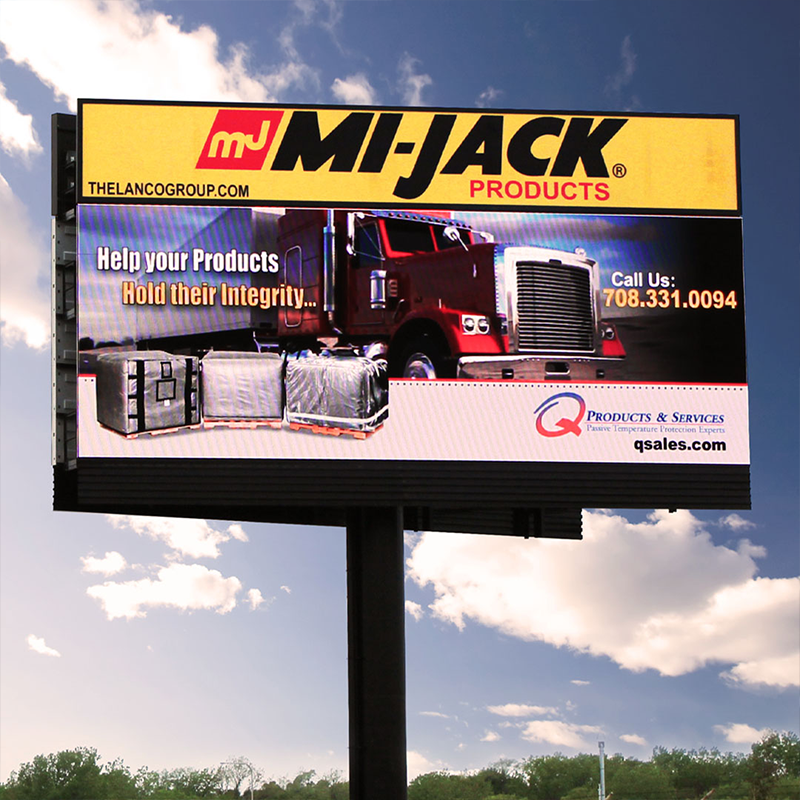

Designing for LED signs isn’t just graphic design at a different size. It’s about legibility at speed, clarity at distance, and timing that respects how people move. When you apply a few core principles—contrast, hierarchy, brevity, and pacing—your messages land fast and look premium on any display. https://youtu.be/TY6rAhOZeXY Start with viewing distance (then pick pixel pitch) Viewing distance drives everything. The farther away your audience is, the larger your type needs to be and the less detail you can show. As a rule of thumb, use large, high-weight fonts with generous spacing at longer distances. Match the display’s pixel pitch to the typical viewing distance so text edges look clean (smaller pitch = tighter, smoother text). Build clear hierarchy Give viewers one job at a time. Lead with a short, bold headline, follow with a single supporting point, and finish with a simple call to action. Avoid stacking multiple CTAs on a single frame. White space is your friend—it separates ideas and makes each element readable at a glance. Contrast and color that pop High contrast wins. Pair light text on dark backgrounds (or vice versa); avoid mid-tone on mid-tone combinations that blend at distance. Reserve brand accent colors for key words or numbers so they stand out. Maintain color consistency across frames so the message reads as one cohesive story. Keep copy tight and time it right Short beats long—think fragments, not sentences. Most viewers have only seconds. Use 2–3 concise frames rather than one crowded frame. Allow enough on-screen time for the slowest reader in your audience. As a starting point, aim ~2–3 seconds for a simple headline and a touch longer when you include a supporting line. Motion with purpose Motion should guide attention, not distract. Use subtle fades, slides, or counters to direct the eye to the key message. Avoid fast flashing or excessive animation that can reduce readability. Ambient light and brightness Daylight, window glare, and interior lighting affect visibility. Set brightness so text stays crisp without washing out colors. If you’re near windows or in bright lobbies, prioritize bold weights and higher contrast palettes. Data-supported impact you can cite Digital signage has been shown to lift sales by roughly 32% and reduce perceived wait times by up to 35%. Studies also report 55–83% higher ad recall than static signage, and large majorities of shoppers say screens influence what they buy. In other words: clear LED design pays off in real outcomes, not just good looks. Production checklist (rapid pass) One big idea per frame High-contrast color pairings Large, heavy fonts with generous spacing Tight copy; minimal punctuation Intentional motion cues CTA present on the final frame Why NEXT LED Signs is the right choice Great design deserves great hardware. NEXT LED Signs builds indoor and outdoor LED displays engineered for clarity, reliability, and easy updates. Every display includes cloud-based software so your team can schedule, swap, and test messages in minutes. Ready to make high-impact LED content the easy way? Contact NEXT LED Signs today for a free quote. FAQs About Designing Messages for LED Signs How much do well-designed LED signs impact sales?Retailers using digital signage report average sales lifts around 32%, showing how clear, concise on-screen messages drive action. Do LED signs improve message recall compared to static posters?Yes. Studies show 55–83% higher ad recall for digital signage versus static, thanks to motion, contrast, and updatable content. Can LED sign design help with perceived wait times?Well-timed, informative frames can reduce perceived wait times by up to 35%, improving the overall customer experience. What copy length works best when designing for LED signs? Keep headlines short and scannable (a few impactful words). Use a single supporting line and a simple CTA on the closing frame. How should I use motion when designing for LED signs?Use motion to guide attention—subtle transitions, directional movement, or counters. Avoid rapid flashing that hurts legibility.
How to Enhance Guest Experiences with Digital Signs for Your Hotel or Resort
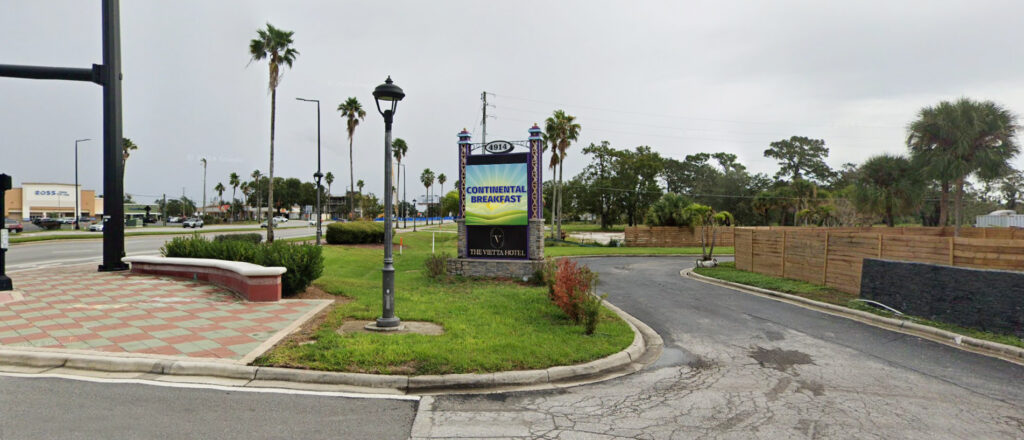

In the hospitality industry, guest experience isn’t just a nice extra—it’s a competitive differentiator. When digital signage in hotels and resorts is done right, it elevates first impressions, cuts friction, and delivers upsell opportunities. Done poorly, it can feel gimmicky. Here’s how to use hotel digital signage solutions, resort LED displays, and interactive guest signage to make your property feel premium, modern, and guest-focused. https://youtu.be/0rlPUWyYmE4 Why use LED signage in hotels? LED displays draw eyes to dynamic content and help you communicate at the speed of operations: welcome messages, live event updates, weather, shuttle times, and on-property offers. Because motion and brightness grab attention far more than paper posters, LED content is remembered longer—83% recall rate. What is digital signage in hotels? Hotel digital signage is a network of indoor LED displays, menu boards, lobby screens, room-adjacent panels, and interactive kiosks driven by a CMS. It lets teams schedule content by location and daypart (lobby vs. elevators vs. F&B), push emergency notices, and localize creatives by guest segment—all without reprinting anything. How can digital signage improve the guest experience in hotels? Clear, timely information reduces confusion and creates a polished arrival. Guests notice it: around 70% of hotel guests find on-property digital displays engaging or entertaining, which helps messages land without adding friction. When paired with wayfinding and timely updates, signage smooths movement through large properties and sets a modern tone. What are some innovative uses of digital signage in hotels? Interactive guest signage at concierge stations for local recommendations and live maps In-room LED displays for on-property promos, spa appointments, and late checkout offers Event & conference boards with live agenda changes, speaker profiles, and room changes LED video walls in lobbies to anchor brand storytelling and drive footfall into F&B What are the benefits of using digital signage in hotels? Practical wins include faster communication, fewer printing cycles, and data-driven creative rotation. On the revenue side, screens can influence buying behavior—19% of consumers report making an impulse purchase after seeing a digital ad—and strong visual recall supports upsell visibility across touchpoints. How can digital signage help with hotel operations? Operationally, screens become your live bulletin board. Teams can change check-in guidance, route guests around closures, and surface shuttle updates or weather alerts instantly. With self-service touchpoints rising, travelers increasingly expect tech-assisted journeys: 70% of U.S. travelers are likely to check themselves in via an app or kiosk rather than at a traditional front desk. How can hotels use digital signs for marketing? Use dayparted content and location-aware placement: breakfast promos in the morning; spa/amenity packages in the afternoon; bar specials and entertainment after 5 p.m. For reference, in retail settings, 19% of consumers say digital signage prompted an impulse purchase—so bringing similar logic to on-property F&B and experience promotions makes sense. How can hotels use digital signs to reduce queues? Pair queue-adjacent screens with “what to expect” steps, mobile check-in QR codes, and wayfinding alternatives (e.g. where to drop bags or pick up keys). Self-service adoption is rising—70% of U.S. travelers prefer app/kiosk check-in. Signage acts as a bridge, keeping lines moving and giving options. Why NEXT LED Signs Belongs in Your Plan Great content deserves excellent hardware. NEXT LED Signs builds indoor and outdoor LED displays designed for hospitality—bright, durable, and reliably legible. Our programmable LED signage platform makes content updates seamless. With in-stock inventory and fast shipping, NEXT LED Signs helps your team deploy guest experience enhancements quickly and confidently. With in-stock inventory, five-day shipping, and strong dealer support, NEXT LED Signs helps hotels and resorts create guest experiences that stand out. Ready to enhance guest satisfaction and revenue at your property? Contact NEXT LED Signs for a free quote. FAQs About Digital Signage in Hospitality What content format drives higher engagement in hotel displays?Combining short video loops, subtle motion, and localized promos tends to outperform static slides; motion attracts attention and helps display content feel fresh. Where should hotels prioritize placing video walls and smaller displays?Video walls are ideal in lobbies and focal gathering areas to anchor the environment; smaller displays perform better in hallways, corridors, and amenity zones for targeted messaging. How often should hotel signage content be refreshed?Refresh content weekly or rotate by daypart (morning, afternoon, evening) to avoid fatigue, and test different creative directions over time for performance. How can hotels quantify ROI from digital signage?Track uplift in service usage, conversion rates near screens, percentage of guests acting on promotions, and compare performance during control vs display periods. Do hotels need interactive kiosks, or will passive signage suffice?Start with strong passive displays to build content consistency; introduce interactive kiosks in zones where guests benefit from deeper engagement—wayfinding, menu lookup, special requests.
Creating a Premium In-Store Experience with LED Displays


When customers walk into a store, their first impression shapes how long they stay, how much they buy, and whether they return. LED displays play a big role in creating that premium in-store experience. Bright, dynamic visuals elevate the atmosphere, deliver information instantly, and set your brand apart from competitors. https://youtu.be/3ZAryOTVaoE What is retail digital store signage? Retail digital store signage refers to screens (LED displays, video walls, kiosks) installed inside shops, controlled by a centralized CMS, that dynamically present content like promotions, wayfinding, messaging, or interactive interfaces. These displays let stores update messaging instantly across locations and tailor visuals by zone or time of day without reprinting. What are the benefits of digital signs in retail? Digital signage offers speed, flexibility, and impact. Because screens can be updated, retailers eliminate printing cycles—saving cost and reducing waste. Visual recall is strong in hardware-enabled environments: digital signage enjoys an 83% recall rate, far surpassing static media. Customer behavior proves the payoff: 80% of customers say they entered a store because a digital sign caught their interest. And many retailers report average sales increases of 31.8% after deploying indoor digital signage. What type of signage is used in the retail store? Retail setups commonly include: LED displays and panels for product zones Video walls for striking visual centers Digital kiosks or interactive signage for self-service, product lookup, or loyalty logins Wayfinding screens in complex layouts Video walls often comprise 27% of the digital signage market and serve as attention magnets by anchoring focal areas. How do you use indoor LED signs to increase sales? Place displays near categories, point-of-sale, or high-interest zones. Use them to cross-sell accessories, highlight limited-time discounts, or rotate visuals that guide shoppers toward add-ons. Because digital signage captures 400% more views than static displays, you have a better chance at influencing decisions. At checkout, small screens or impulse messaging can drive incremental purchases: 19% of consumers report making impulse buys after seeing digital ads. What is the cost of an in-store retail digital store signage system? While hardware, software, installation, and training vary by scale, many retailers estimate that total system cost amortizes over 3–5 years through increased revenue and operational savings. You gain 30–35% reductions in advertising and printing costs and cut labor for signage changeovers. Is retail digital store signage easy to use? Yes—modern CMS platforms make it simple. Team users or store managers can swap visuals by location, schedule daily content, and preview changes. Because digital displays allow updates instantly, 95% of users rank ease-of-update among the top benefits. How is digital signage installed? Displays install via wall mounts, ceiling brackets, freestanding enclosures, or recessed setups. Media players plug into each display (or cloud-based systems stream content). Network connectivity ensures updates sync instantly. For retail chains, installs scale with rack-mount players and managed rollout plans. How can you use LED in a retail environment? Use LED displays for product showcases, ambient messaging, digital shelf tags, sizing guides, and window displays. LED panels excel in bright zones—thanks to high brightness and contrast—and can combine with touch capabilities for interactive features. Their modular nature allows video walls to scale across walls or pillars. How can a small business maximize in-store signage? Start with a few high-impact zones—entrance, checkout, and a cross-sell aisle. Use templated content you can rotate weekly. A/B test messages. Use your display network as a mini retail media network by showcasing brand partnerships. Even one display can pay for itself when paired with smart content and location strategy. What content ideas drive sales and engagement? Run rotating promotions, spotlight top sellers, use subtle motion to draw attention, run loyalty or member offers, countdown timers for flash deals, and display product testimonials or social media feeds. Tailor by daypart—morning, lunch, evening. Mix brand storytelling with hard sells to keep environments engaging. What should be displayed on digital signage in a store? High-level recommendations: Short headlines and supporting lines Clear call to action (e.g. “See this at aisle 5”) Imagery or video with product visuals Dynamic offers that change by time or inventory Localized content per store Wayfinding cues Loyalty or coupon prompts How can digital signage enhance the in-person shopping experience? Good signage informs, engages, and reduces friction. It helps shoppers find what they want, highlights helpful options, and delivers timely offers. Rather than wandering, customers feel guided. That sense of clarity, coupled with visual dynamism, transforms a store into a smart, immersive environment. Why NEXT LED Signs is the Right Choice Delivering a premium in-store experience requires technology that is bright, reliable, and easy to manage. NEXT LED Signs manufactures indoor LED displays engineered for clarity and performance. Our video walls and programmable signage are designed to capture attention, guide customers, and enhance brand presence. Every display comes with cloud-based software for simple updates, giving retailers the flexibility to keep content fresh and relevant. With in-stock products, fast five-day shipping, and strong dealer support, NEXT LED Signs makes it easy for retailers to create in-store experiences that customers remember. Ready to elevate your store with a premium in-store experience? Contact NEXT LED Signs today for a free quote and see how fast, reliable LED displays can transform your retail space.+ FAQs About LED Signage for Retail Stores How quickly can retailers see ROI from in-store digital signage?Many programs reach positive ROI in 6–18 months, and some case studies report payback in ~11 months depending on scale and content effectiveness. Where should stores place signage to improve wayfinding and reduce shopper stress?Put displays at decision points (entrances, aisle junctions, service counters). Smart wayfinding has been shown to cut shopper stress by ~20%, which helps keep dwell time and satisfaction up. Does dwell time on digital displays correlate with better outcomes?Yes—longer on-screen engagement is linked with up to 30% higher recall and up to 20% higher conversion rates when content is relevant. Are LED displays the preferred hardware for retail digital signage?Yes. The LED segment accounts for roughly 48.5% of the retail digital signage market,
LED Signs Create and Immersive Experience in Entertainment
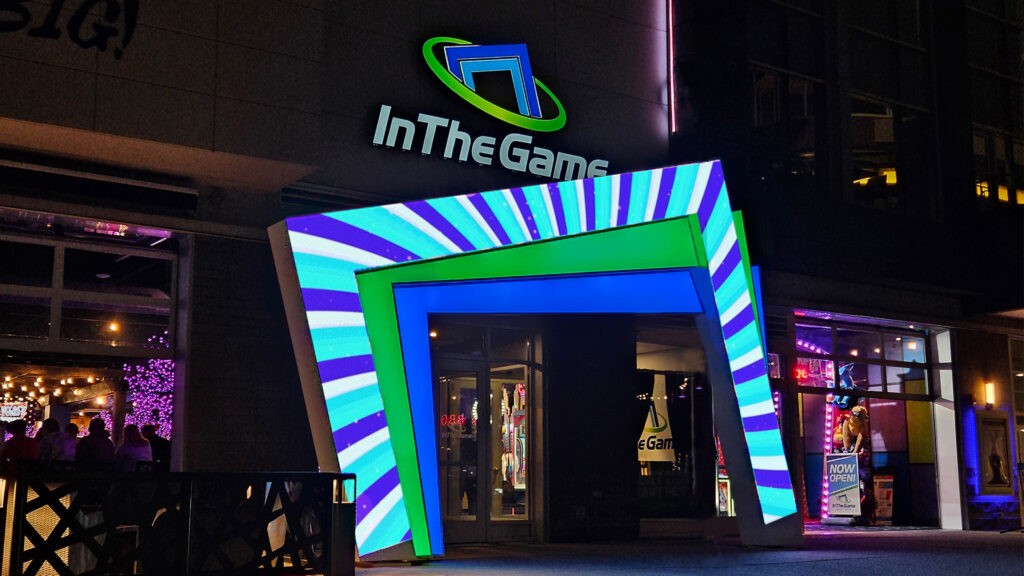

Think about the last concert, play, or theme park you visited—what stood out? Probably the lights, the energy, and the way it all felt like part of the show. That’s the power of LED digital signage. LED signs aren’t just screens anymore. They’re creating full-blown experiences that draw people in, hold their attention, and make every moment more exciting. Whether you’re at a packed stadium or walking through a museum, LED displays are shaping how we see and feel entertainment. Revolutionizing Concert Venues Modern concert venues are increasingly integrating advanced LED technology to enhance live performances. A prime example is the Sphere in Las Vegas, which boasts a 160,000-square-foot wraparound LED screen with a 16,000 × 16,000 resolution, providing an unparalleled visual experience. This high-resolution display envelops the audience, creating an immersive environment that complements the musical performance. Elevating Nightlife Ambiance In the realm of nightlife, LED screens are instrumental in crafting unique and engaging atmospheres. Nightclubs utilize LED walls to transform spaces, offering versatile designs that can adapt to various themes. These dynamic displays not only enhance the visual appeal but also provide interactive entertainment, making the environment more engaging for patrons. Theater Backdrops That Come to Life LED signs have made their way into live theater, too. Instead of relying on bulky sets or printed backdrops, theaters are turning to LED displays that can change scenes instantly. Directors get more creative freedom, and audiences get a more dynamic show. It’s a win-win. Theme Parks That Keep You Engaged Theme parks are all about the experience—and LED signs help make that experience seamless. They guide visitors with real-time info, add motion to attractions, and show branded content without breaking the flow. From rides to walkways, these signs help parks tell stories and keep people entertained at every step. Museums That Move and Teach Even museums are embracing LED displays to make learning more interactive. Video walls and immersive exhibits bring history, science, and art to life in ways that traditional setups just can’t match. It’s a better way to connect with visitors of all ages. Why It All Works Entertainment is about emotion, connection, and atmosphere. LED signs check all the boxes. They’re bright, flexible, and built to adapt to the moment. Whether it’s a concert, a theme park, or a gallery, LED displays help venues create moments that people don’t forget. From concerts and nightclubs to theaters, theme parks, and museums, LED technology enhances audience engagement and elevates the overall experience, setting new standards for entertainment environments. Next LED Signs Can Help Want to turn your venue into an experience people talk about?Next LED Signs offers powerful display solutions built for high-impact entertainment environments. Let’s talk about what’s possible. Contact Next LED Signs today to explore how LED digital signs can enhance audience engagement and strengthen your brand presence. Frequently Asked Questions How do LED signs increase audience engagement at entertainment venues?Studies show that digital displays capture 400% more views than static signs and increase message retention by up to 83%. That kind of visibility is why LED signs are used to energize crowds, reinforce branding, and keep people immersed in the moment. Are LED signs effective in both indoor and outdoor settings?Yes. High-brightness outdoor models ensure visibility in direct sunlight, while indoor LED walls deliver crisp visuals for stages and exhibits. According to the OAAA, digital signs maintain 94% viewability outdoors—even in high-traffic environments. Can LED signs be customized for different venue types?Absolutely. From a curved LED wall in a nightclub to a weather-sealed outdoor marquee for a theme park, each application is purpose-built. More than 70% of entertainment venues now use programmable LED displays to adapt content in real time. What makes LED signs better than traditional backdrops or static signage?Flexibility. You can change content instantly, show animation, and reduce setup time. LED signs also lower costs—saving on materials, labor, and printing. One study found that digital signage reduced operating expenses by up to 30% over five years. Why do entertainment venues choose Next LED?Next LED combines speed, reliability, and U.S.-based service. Our solid-state technology is built for performance and durability. In fact, clients report a 46% improvement in visitor satisfaction after implementing our digital displays.
Digital Church Signs for Every Budget
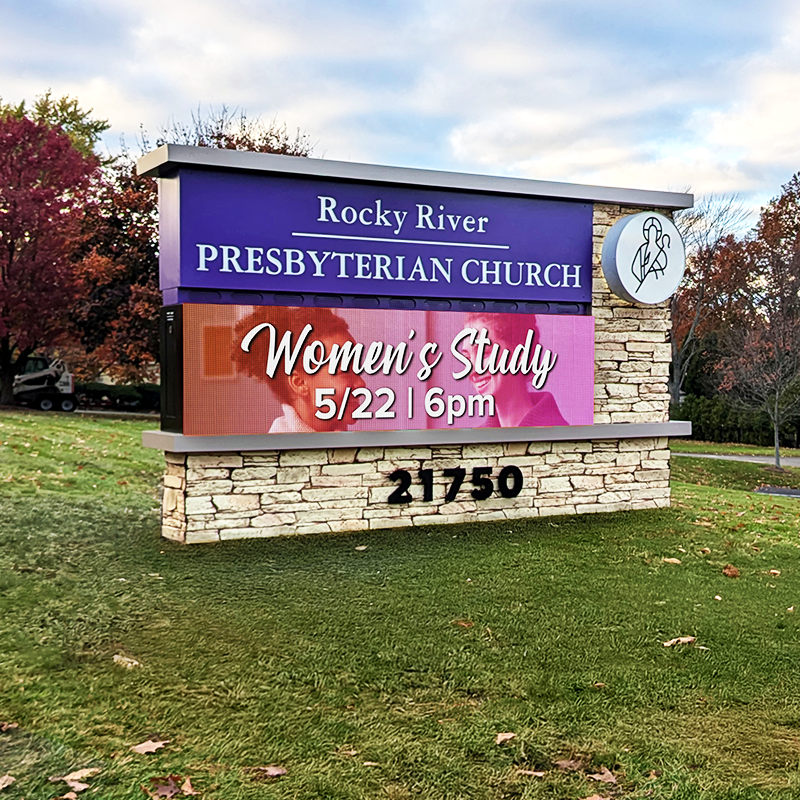

Not every church has a mega-ministry budget—and that’s okay. Whether you’re in a small rural parish or growing urban congregation, a digital church sign is still within reach. At NEXT LED Signs, we believe your message shouldn’t be limited by your budget. That’s why we’ve built flexible options for churches of all sizes—from community-focused storefront ministries to established sanctuaries with decades of history. If you’ve ever thought a digital sign was too expensive, too complicated, or too much hassle… let’s clear that up right now. Why Digital Signs Are a Smart Investment for Churches Your church isn’t just a place of worship—it’s a hub for community outreach, events, support, and hope. A digital sign helps you: Share service times and sermon series Announce food drives and coat giveaways Post real-time donation goals Celebrate community events and milestones Broadcast emergency updates or weather delays Inspire passersby with Scripture or encouragement And you can do it all instantly, from your phone or laptop—no ladders, no letter boards, no delays. Tailored Options for Every Budget We’ve worked with churches of every size, and we know one-size-fits-all doesn’t work. That’s why NEXT LED Signs offers: Flexible financing options Multiple pixel pitch choices for image clarity vs. cost Single-sided and double-sided sign options Smaller cabinet footprints for tighter installation areas Support with permitting, renderings, and installation to streamline the process Need a basic message center to post times and verses? We’ve got it. Want a sharper sign that shows your pastor’s photo or a live countdown to VBS? We’ve got that too. You decide what fits. We make it happen. Real Churches. Real Results. Across the country, churches using NEXT LED Signs are seeing more engagement, more donations, and fuller pews. According to industry data: Churches with outdoor digital signage see up to 20% more first-time visitors. Messaging flexibility reduces time spent updating communications by 40% or more. Congregations are more likely to respond to displayed donation goals than to print appeals. When your message is visible, vibrant, and timely, it connects with more people—plain and simple. Let’s Talk About What Works for Your Church If you’re not sure what kind of sign fits your building or your budget, that’s exactly what we’re here for. We’ll show you what other churches like yours are using, what it costs, and what makes sense for your mission. We’ll even provide a free photo rendering so you can visualize it before moving forward. Want to share more without overspending? You’re in the right place. What Makes NEXT Different? Churches choose us not just because we sell LED signs—but because we understand what the sign is for. We don’t compete with you or your installer—we work with your team. We offer fast 5-day shipping on in-stock models, which means you don’t wait for months while your project stalls. We walk you through content planning, scheduling, and best practices, so you’re ready from Day 1. We offer a “Pastor Spotlight” upgrade for churches that want sharper photo clarity or advanced graphics later on. And we back it all up with responsive support—real people who understand ministry timelines and small-team needs. Contact us today to find out how you can put digital signs to work for your organization. FAQs About Digital Signs for Churches Can smaller churches afford digital signs?Yes. We offer flexible cabinet sizes, basic display options, and financing support to help make signs accessible to churches with limited budgets. How is content updated on the sign?You can change messages instantly through your phone or computer using our cloud-based software. No ladder or plastic letters required. What kind of messages can churches post?Anything from service times and events to Bible verses, donation updates, and community alerts. You’re in control of what shows—and when. Do I need special permits to install a digital sign?Most areas require local permitting. We help guide churches through that process and provide photo simulations if needed for council approval. Can I upgrade to a sharper display later?Yes. We offer scalable options and can help you choose a model now with room to upgrade pixel pitch or display features later on.
Maximizing Audience Engagement with Dynamic Digital Signage Content


https://youtu.be/Y58fr2lWfSw Why Dynamic Content Matters Static messages fade into the background, but dynamic digital signage captures attention and keeps audiences engaged. Research shows that digital displays capture 400% more views than static signage, making movement and variety essential for effective messaging. Use Motion with Intention Subtle animation improves viewer recall by up to 55%. Smooth transitions and visually appealing motion guide attention without distracting from the message. Keep It Short and Visual Audiences process short, visual messages faster. Headlines with 5–7 words supported by graphics or video lead to 60% higher information retention. Tailor Messaging to the Viewer Personalized content outperforms generic slides. Retailers who personalize digital signage see an average 20% lift in sales by speaking directly to their audience. https://nextledsigns.com/wp-content/uploads/2025/10/springSavings-1.mp4 Show Real-Time Information Live content—news, weather, event feeds—keeps signage relevant. Businesses using real-time updates report a 62% increase in audience interaction. Make It Interactive Adding QR codes, touchscreen menus, or mobile prompts increases retention. Interactive signage drives 81% more engagement than static content. Rotate Often, Reuse Strategically Repeating the same message can cause viewer fatigue. Brands that rotate content and use seasonal updates see a 30% boost in retention. Frequently Asked Questions About LED Sign Content Q: How much more effective is animated content on digital signage?A: Animated messages improve viewer recall by up to 55% and boost engagement when motion is used purposefully and sparingly. Q: What’s the ideal length for a digital signage message?A: Headlines between 5 and 7 words are easiest to read at a glance. Short messages improve comprehension and retention by up to 60%. Q: Does personalized content really impact engagement?A: Yes. Personalized digital signage can drive a 20% increase in sales by making the message more relevant to the target audience. Q: Are real-time updates worth adding to displays?A: Businesses that incorporate real-time content report 62% higher interaction rates, showing that freshness matters. Q: Why is content rotation important for viewer retention?A: Viewers are 30% more likely to stay engaged with digital signage that features regularly updated, rotating content. At Next LED Signs, we provide state-of-the-art LED signage solutions designed to meet the needs of businesses worldwide. Whether you want to enhance retail experiences, streamline public communication, or improve operational efficiency, we can help. Let’s bring your vision to life. Contact Next LED Signs today to explore cutting-edge digital signage solutions tailored to your industry.
Indoor Digital Displays Improve Wayfinding Efficiency
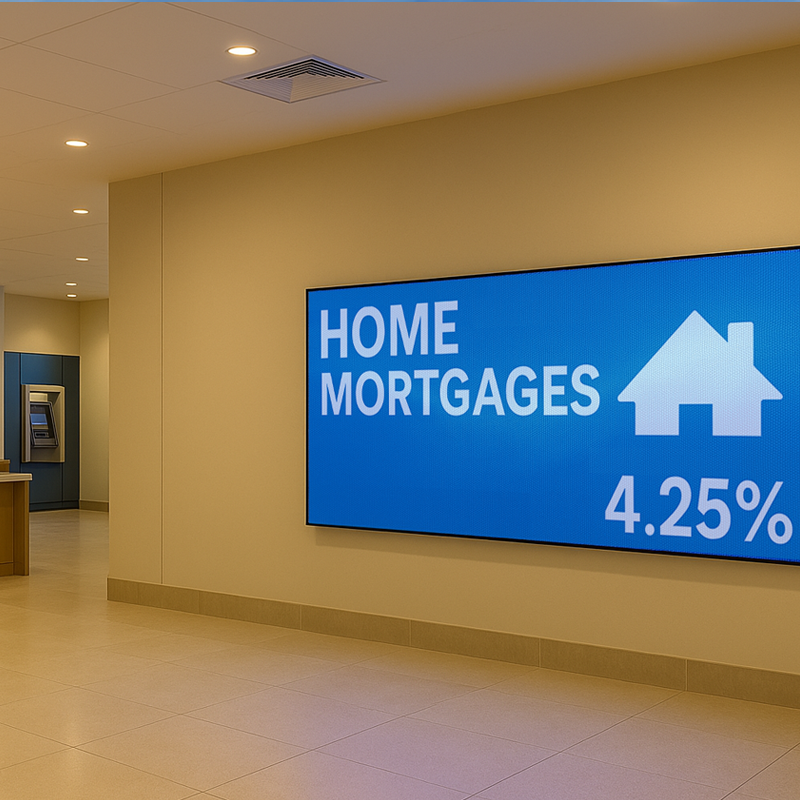

Finding your way through a busy building can be frustrating—especially in hospitals, schools, airports, and office complexes. That’s where indoor LED displays shine. These digital signs help people navigate large spaces quickly, confidently, and without confusion. Why Wayfinding Matters Good wayfinding improves the experience for visitors and staff. It cuts down on delays, missed appointments, and the need for one-on-one directions. In places like healthcare facilities, every second counts—and clear signage helps make sure people get where they’re going on time. Plus, wayfinding signs don’t just guide—they can inform. Event schedules, emergency messages, and service alerts can all be displayed in real time. LED Displays Make It Clear Traditional signs are static. Once printed, they stay the same—unless you replace them. Digital LED displays let you update directions, schedules, or alerts instantly. Whether you need to reroute traffic due to construction or show live updates during an event, your sign can adapt. And because LED displays are bright and clear from a distance, people spot them faster and follow instructions more easily. Industry Adoption and Market Growth Education Sector 70% of colleges have integrated digital displays for wayfinding, classroom information, and event scheduling. Retail & Public Spaces Digital signage engages 10% of U.S. residents over age 12, proving its effectiveness in attracting attention. Navigation Efficiency & Customer Satisfaction Implementing digital wayfinding solutions increases navigation efficiency by 40% and enhances visitor experience by 30% in complex venues like shopping centers and healthcare facilities. Market Expansion The global digital signage market continues to expand, with an estimated CAGR of 7.7%. Revenue is projected to grow from $25.1 billion in 2022 to $34.7 billion by 2026, fueled by increasing demand for digital wayfinding solutions. Flexible for Any Facility We design indoor signs that fit right into lobbies, hallways, entry points, and more. With slim profiles, high-resolution output, and quiet operation, these displays work seamlessly in: Hospitals Convention centers Universities Museums Office buildings Transit hubs Frequently Asked Questions How do LED displays improve wayfinding?Digital signs can increase wayfinding success by over 30% compared to static signs, according to a study by the Society for Environmental Graphic Design. Clearer instructions mean fewer people getting lost or missing appointments. Can the displays be updated in real time?Yes. With cloud-based software, staff can update directions or alerts in seconds. This is especially useful for facilities with shifting schedules, emergency notices, or high foot traffic. Are LED signs easier to read than printed signs?Absolutely. LED displays are brighter and more visible from a distance. In well-lit buildings or dim corridors, digital signs maintain their clarity—reducing confusion and eye strain. Can I show more than just directions?Definitely. Many facilities display room schedules, meeting notices, safety instructions, or service updates alongside wayfinding messages. It’s a flexible, multi-use solution. Do LED wayfinding signs reduce labor or costs?They do. Digital signage reduces the need for printed signs and personal assistance. One large hospital reported a 25% drop in staff time spent redirecting patients after installing LED wayfinding displays. At Next LED Signs, we provide state-of-the-art LED signage solutions designed to meet the needs of businesses worldwide. Whether you want to enhance retail experiences, streamline public communication, or improve operational efficiency, we can help. Let’s bring your vision to life. Contact Next LED Signs today to explore cutting-edge digital signage solutions tailored to your industry.
LED Video Walls in Stage Productions: A New Era of Visual Storytelling
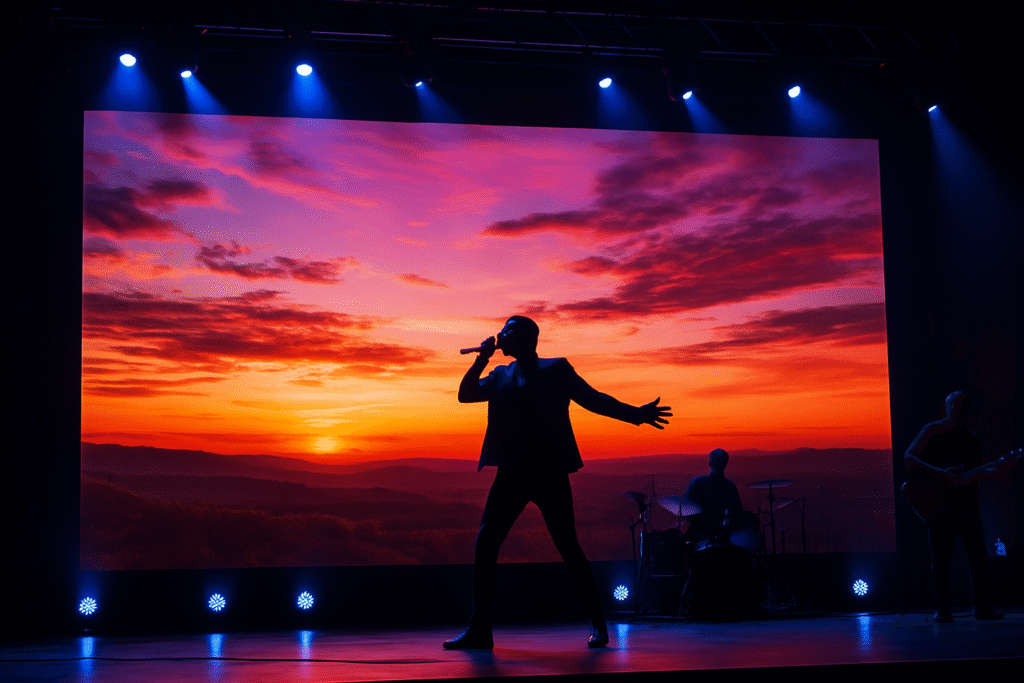

Bring Your Stage to Life with LED Video Walls Whether you’re producing a concert, a theatrical show, or a corporate event, your stage needs to make a statement. LED video walls are transforming what’s possible in live production. These dynamic displays allow you to create immersive visuals that grab attention and elevate your audience’s experience. A Visual Game-Changer for Live Performances Traditional backdrops and printed scenery limit what you can do on stage. With LED video walls, your stage becomes a canvas that can shift in real time. Need a dramatic cityscape one moment and a cosmic galaxy the next? No problem. LED displays change instantly, bringing new energy and flexibility to your show. Adaptable to Any Venue Size From small community theaters to large arenas, LED video walls scale to fit. Modular design means you can build a display that works with your exact stage dimensions—no need to redesign your set to fit the tech. Plus, the slim profiles and high brightness make them ideal for both indoor and outdoor use. Real-Time Control and Content Flexibility With LED walls, you’re in control. Run video, animation, text, and live feeds—all from user-friendly software that lets you update content instantly. This real-time flexibility means you can respond to last-minute changes, integrate social media, or keep the audience informed between acts. Memorable Audience Engagement When the audience is immersed, they’re more engaged—and more likely to talk about your show afterward. Research shows that visual displays increase recall by 83% and can make live experiences feel more interactive and impactful. Whether it’s a pulsing background synced to music or a stunning animated set change, LED walls make your production unforgettable. Enhancing the Audience Experience When used creatively, LED video walls blur the line between stage and screen. At concerts, they amplify emotion by displaying live video of the performers, crowd reactions, or pre-produced visuals synchronized to the beat. In theater, they can simulate environments—city streets, stormy seas, or abstract dreamscapes—transforming a simple stage into a multidimensional space. LED displays have been shown to increase audience retention and recall by over 40%, compared to traditional static visuals, according to a 2023 Nielsen DOOH study. That impact is especially valuable for corporate events or branded experiences where messaging is key. Cost-Effective and Scalable for Any Venue While LED video walls were once reserved for mega-productions, advances in manufacturing and component design have made them accessible to smaller theaters, churches, and regional venues. High-efficiency panels reduce energy use, while longer lifespans and rugged design lower maintenance costs. More than 75% of production companies report positive ROI from integrating LED walls, citing both visual impact and logistical savings over printed backdrops and one-time use sets, according to Event Tech Brief. Why Stage Designers Choose Next LED Signs Next LED Signs delivers high-performance LED video wall systems built for the demands of live entertainment. Our displays feature tight pixel pitches, seamless panels, and robust control systems that integrate smoothly into any production workflow. Whether you’re staging a musical, a corporate keynote, or a faith-based performance, we offer tailored solutions that elevate your visuals and simplify your setup. Let us help you turn your stage into a canvas of motion, light, and emotion—with an LED video wall that performs as brilliantly as your cast. Sign Location Mapping: Mapping out precise placements for each sign across the site. Key considerations: Visibility: Signs should be placed where they are easily seen by pedestrians and drivers, avoiding obstructions like trees or buildings. Accessibility: Locations should comply with ADA (Americans with Disabilities Act) requirements to ensure all visitors can access and read signage. Designated zones: Assign specific areas for particular types of signage to avoid clutter and confusion. FAQs About LED Video Walls for Stage How much impact do LED video walls have on audience engagement?Studies show that audiences retain 83% more information when it’s delivered visually. LED video walls dramatically increase visual impact, making performances more memorable. Can theaters afford LED video wall systems?Yes. Prices have dropped over 35% in the past five years. Many mid-sized theaters recover their investment within 12–18 months through increased ticket sales, sponsorships, and rentals. Are LED video walls hard to control during live shows?Not at all. Most systems use intuitive software with real-time control, so you can switch scenes, videos, or effects without interrupting the performance. Do LED video walls work in brightly lit venues?Yes. High-brightness displays (often 1,000–5,000+ nits) maintain clarity in ambient light. That makes them ideal for concerts, churches, and outdoor stages. What are the maintenance requirements?LED walls are extremely low-maintenance. With solid-state engineering, they have no moving parts and can last up to 100,000 hours with minimal upkeep. How Next LED Signs Can Help Contact Next LED Signs today to explore how LED digital signs can enhance audience engagement and strengthen your brand presence.
Indoor LED Displays Are Reshaping Workplace Communication
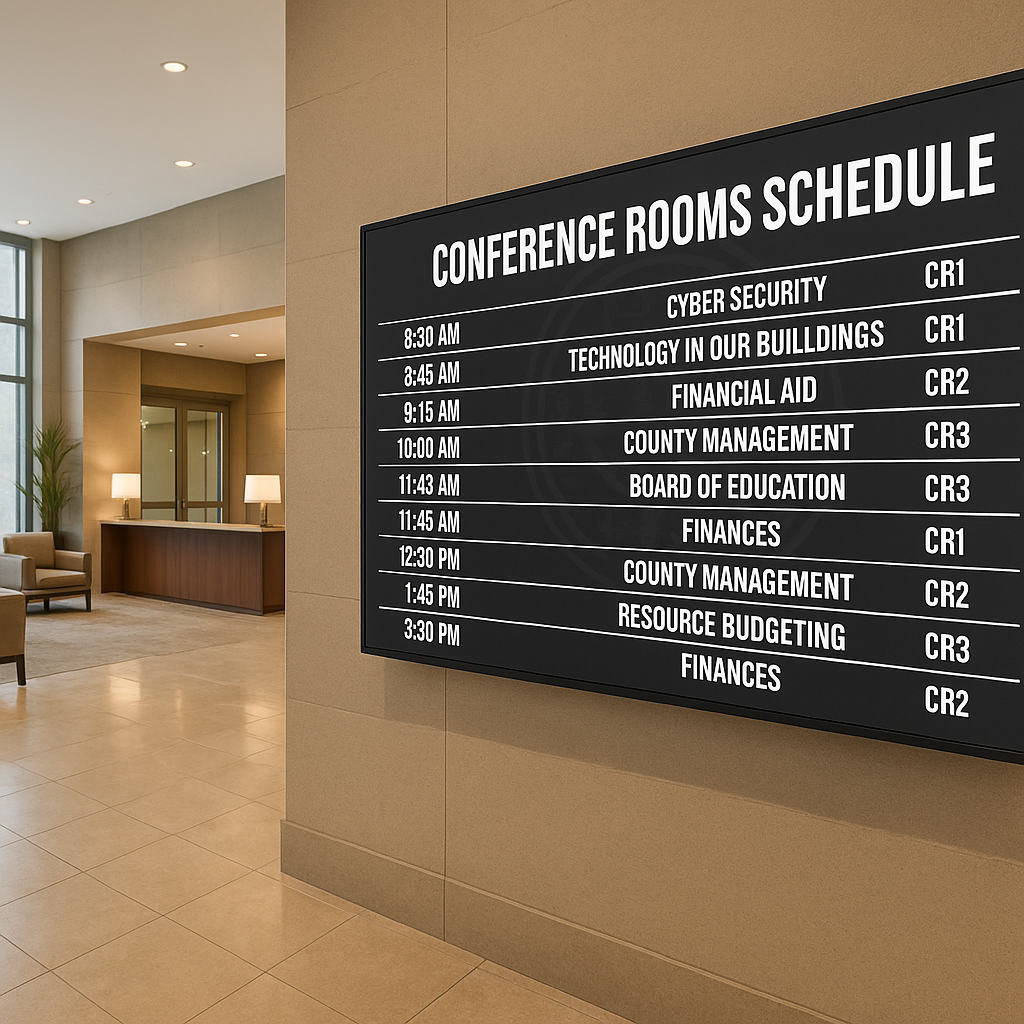

LEDs (Light Emitting Diodes) have skyrocketed in popularity thanks to their energy efficiency, eco-friendliness, affordability, and long lifespan. They’re the backbone of modern digital signage and scoreboards, offering businesses a reliable and impactful way to display information and attract attention.
Among the various types of LEDs, SMD (Surface Mounted Devices) and DIP (Dual Inline Package) LEDs stand out as the most common technologies. While they share the same foundational principles, they bring unique advantages to the table.
